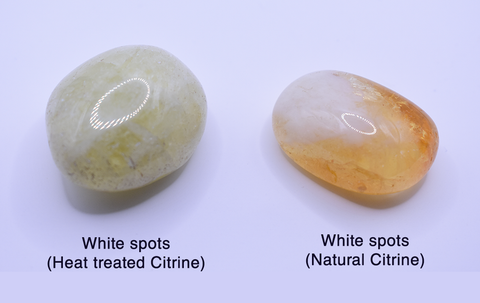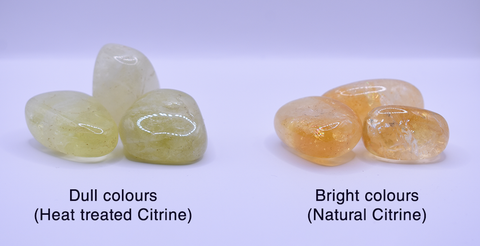Citrine is a bit of a hot topic in the crystal community these days. There is a pushback against "fake" citrine, meaning amethyst that has been artificially heated to appear like citrine.
Amethyst and citrine are both forms of quartz and the process of amethyst becoming citrine is the same in nature, only the heating process is much more gradual, taking many years and resulting in a greater depth of colour.
People are very interested in owning naturally formed citrine over artificially heat treated amethyst, which is perfectly understandable, but the methods described online to distinguish between the two are often flawed, out of date or just wrong.
This makes it very difficult for customers to find real citrine and even makes it less likely that suppliers would try to stock real citrine, as they're often accused of selling fake citrine that has been misidentified by an amateur.
The drama around citrine has created a difficult environment for both sellers and buyers, so I would like to set the record straight here. At BlueMoonPup, we handle both artificially heated citrine and natural citrine. We find that some customers prefer the lower price point of heated citrine, whilst others prefer the deeper colours of natural citrine. I hope that by providing some solid examples we can rid the world of some misconceptions about citrine.
MYTH: WHITE IN THE CRYSTAL IS EVIDENCE OF ARTIFICIAL HEATING
MYTH: NATURAL CITRINE IS EVEN IN COLOUR
Opaque white parts of a crystal are very common in citrine, whether it is naturally formed or artificially. This myth came about because there was a period a few years ago where amethyst was being artificially heated in machines that only heated in one direction, which lead to a tell-tale colour banding from dark to white.
However this isn't the case anymore. Modern machines for artificially heating amethyst are capable of heating from every direction perfectly evenly. This typically results in a very even coloured citrine without any white spots. That's right - it's actually the opposite of what we've been told!
This makes a lot of sense when you think about it. Of course natural citrine would be more likely to have white spots, as the heat and pressure underground will often be uneven. Something that looks like coloured glass is more likely to come from a lab.


HOW TO IDENTIFY REAL CITRINE
Comparison is the only fool-proof way to identify real citrine. The depth of colour in naturally formed citrine is starkly different to artificially heated citrine. I've provided a comparison image below.

Of course, online this can be difficult to do, as photographs often don't give a true impression of appearance. If you can't see the stone in person, most of the time your best bet is to just ask the seller if they are selling natural or heat treated citrine. Most sellers are perfectly honest about this.
If you'd like to buy our natural citrine, you can click here:
https://bluemoonpup.com/products/natural-unheated-brazilian-citrine-tumblestone
